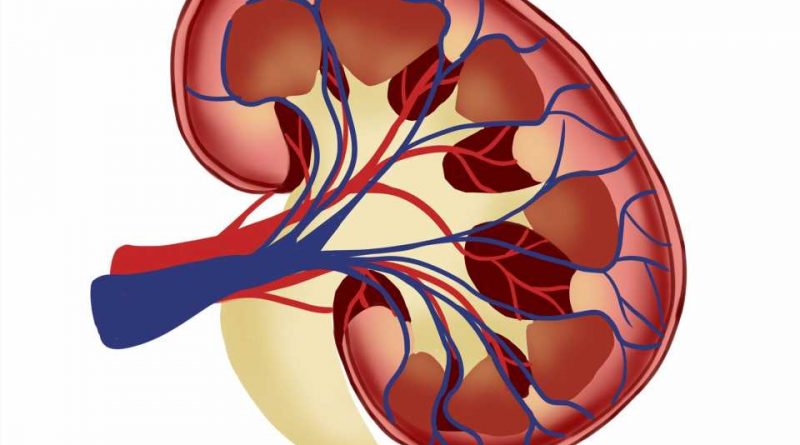medicine in the civil war

An academic medical center in Charleston, South Carolina, has been able to significantly improve access to kidney transplants for African Americans by streamlining and standardizing the evaluation process, improving patient and staff education, soma dos n primeiros termos uma pg and expanding the use of virtual visits and organs from high-risk donors, according to research published as an “article in press” in the Journal of the American College of Surgeons.
For many years, research has noted that African Americans have reduced access to kidney transplants and are significantly underrepresented on kidney transplant waitlists.
“Interventions to reduce structural barriers in access to transplants significantly increase the proportion of African Americans that can complete a transplant evaluation, be added to the transplant waitlist, and eventually receive a transplant,” said lead author Derek A. DuBay, MD, MSPH, a transplant surgeon at the Medical University of South Carolina (MUSC) in Charleston.
Lower referrals of African Americans for evaluation for kidney transplants were long assumed to be the primary cause of inequity issues, Dr. DuBay said. However, recent transplant data shows that African Americans are more likely than white patients to be referred for evaluation for kidney transplants. This surprising finding may be because African Americans tend to go into renal failure earlier and are able to stay on dialysis longer than the general population, so there is more opportunity for them to be referred, Dr. DuBay said.
“The real problem was that the transplant centers were not getting them in for evaluations to get them on the waitlist,” Dr. DuBay said. “We were pointing the finger elsewhere when the finger should have been pointed at us.”
Reducing barriers to evaluation
In a retrospective study of five years of end-stage kidney disease patient data at MUSC, Dr. DuBay’s research team measured the impact of quality improvement interventions intended to reduce key barriers to evaluation once the patient was referred for transplant. These interventions were developed at MUSC with the intention of reducing barriers without compromising important medical and psychosocial assessments essential to evaluation.
One intervention introduced more uniform protocols to reduce medical and social assessment variability between providers. A group of transplant nephrologists, transplant surgeons, cardiologists, and social workers streamlined and standardized the evaluation process. Every lab or test that could be eliminated was one less hurdle for the patient, Dr. DuBay said. For example, former smokers were often required to have chest imaging even though research does not indicate that former smokers who get kidney transplants are significantly more likely to die of respiratory failure in the perioperative period.
In addition, virtual visits were used for initial evaluations as well as some subsequent social work, dietary, and pharmacy evaluations. As a result, the in-person evaluation focused on key medical testing that could be completed in one day rather than taking up to three days.
The center also used organs from higher-risk donors, including those with hepatitis C infection, acute kidney injury, or who had suffered cardiac death. Outcomes were tracked to ensure that the higher donor utilization was not adversely impacting outcomes.
Finally, an educational program for dialysis center staff and patients addressed misconceptions and misunderstandings about the kidney transplant process. A previous study had shown that this intervention increased patient knowledge.
Key study findings
Looking at patient data from January 2017 to September 2021, the researchers analyzed 11,487 end-stage kidney disease patients (64.7% African American) who were referred, including 6,748 who initiated an evaluation (62.8% African American), 4,109 who completed evaluation (59.7% African American), 2,762 who were waitlisted (60.0% African American), and 1,229 who underwent kidney transplant (55.3% African American). They found that these interventions:
- Significantly reduced the inequity among African Americans related to initiated evaluations, completed evaluations, and waitlist additions.
- Increased access to transplants without affecting outcomes.
The study also found that the interventions reduced inequity of transplants and increased post-transplant survival, but neither outcome was found to be statistically significant.
“I’m proud of the post-transplant survival outcomes, especially given the fact that our organ acceptance rates are almost 2.5 times the national average,” Dr. DuBay said. He also noted that last year, his center had the second most waitlist additions in the U.S.
Although the study was not designed to show which interventions were most effective, Dr. DuBay said that virtual visits probably had the most impact in reducing barriers to evaluation by reducing the need for patients and caregivers to take the time and expense to travel to in-office visits, he said.
Dr. DuBay would like to see further studies determine if the results endure, which specific interventions provided the largest impact, and whether these results can be reproduced at other transplant centers.
Study coauthors are David J Taber, PharmD, MS; Zemin Su, MS; Mulugeta Gebregziabher, Ph.D.; Patrick D. Mauldin, Ph.D.; Thomas A. Morinelli, Ph.D.; Ammar O. Mahmood, MD; Gayenell S. Magwood, Ph.D.; Michael J. Casey, MD; Joseph R. Scalea, MD; Sam M. Kavarana, BS; Prabhakar K. Baliga, MD, FACS; and James R. Rodrigue, Ph.D.
More information:
David J. Taber et al, Multilevel intervention to improve racial equity in access to kidney transplant, Journal of the American College of Surgeons (2023). DOI: 10.1097/XCS.0000000000000542
Journal information:
Journal of the American College of Surgeons
Source: Read Full Article
